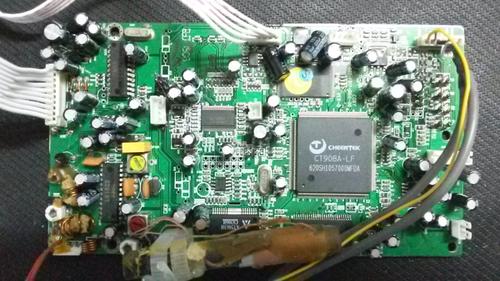 +86 755 2794 4155
+86 755 2794 4155  sales@knownpcb.com
sales@knownpcb.com
-
Shenzhen KNOWNPCB Technology Co., Ltd.
 +86 755 2794 4155
+86 755 2794 4155  sales@knownpcb.com
sales@knownpcb.com
 2023-10-26
2023-10-26
 274
274

The types of FPC board substrates mainly include polyimide (PI), polyamide acid (PAA), polyamide ester (PA), polyaniline ester (PEN), and fluoroplastics (FEP). Polyimide is the most common substrate with good heat resistance, chemical corrosion resistance, and mechanical properties, suitable for high-temperature and high-frequency applications. PAA substrates are relatively inexpensive, but have poor heat and chemical resistance, making them suitable for low-cost and general performance requirements applications. PA and PEN substrates are intermediate in terms of heat resistance, chemical resistance, and mechanical properties between polyimide and PAA, making them suitable for various moderately demanding applications.
The characteristic of FEP substrate is its excellent flame retardancy and electrical properties, suitable for high demand applications.
When selecting FPC board substrate, it needs to be determined based on specific application requirements and performance requirements. The first thing to consider is temperature requirements. If the application environment has high temperatures, such as automotive electronics, industrial control systems, etc., polyimide substrate is a good choice. If there is a high cost requirement, PAA substrate can be chosen for general applications or low temperature environments. The next thing to consider is electrical performance, such as dielectric constant, withstand voltage, etc. If a lower dielectric constant and higher voltage resistance are required, polyimide is the preferred choice. In addition, flexibility and reliability requirements should also be considered, such as bending times, weldability, etc. Different substrates also have certain differences in these aspects, and it is necessary to choose the appropriate substrate according to the specific situation.
In addition to the type of substrate, parameters such as substrate thickness, copper foil thickness, and cover layer thickness also need to be considered. The thickness of the substrate is generally 0.05mm, 0.075mm, 0.1mm, etc., and the selection should be determined based on the structure and stress requirements. The thickness of copper foil is generally 1/3oz, 1/2oz, 1oz, etc. The thicker the thickness, the better the conductivity, but the higher the cost. The thickness of the covering layer is generally 15um, 25um, etc., which determines the flexibility and reliability of the FPC board.

Or call +86 755 2794 4155
Inquiry Now

